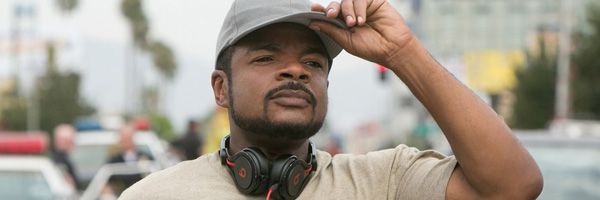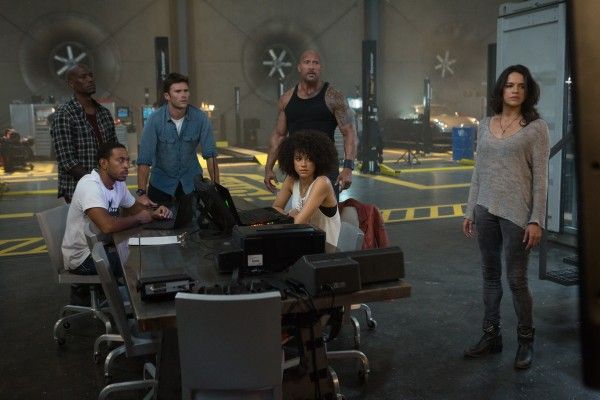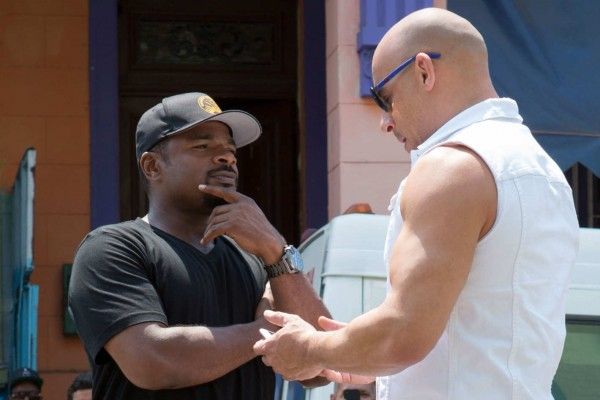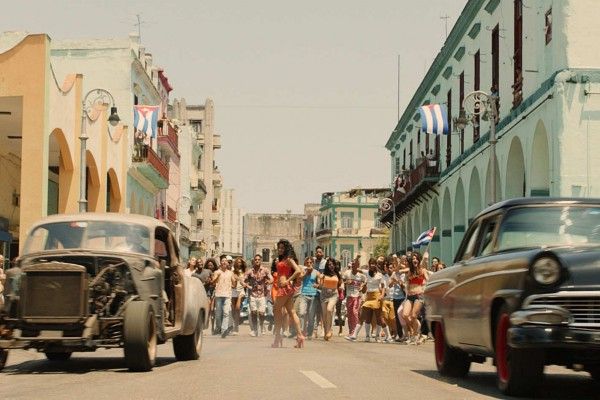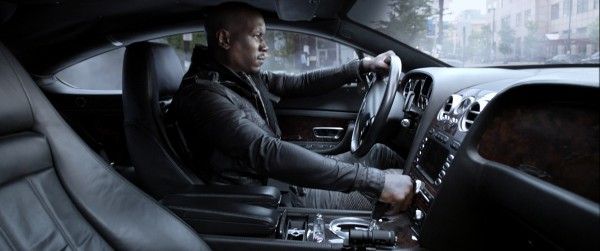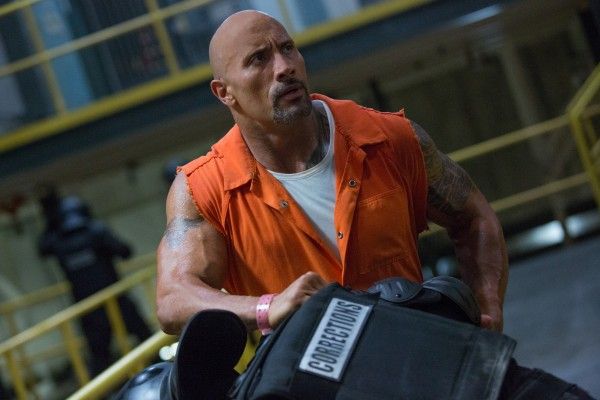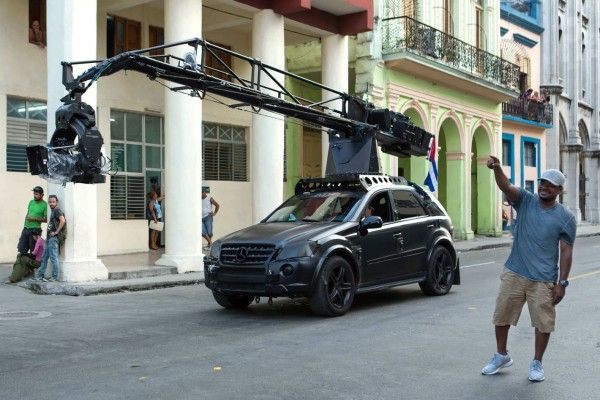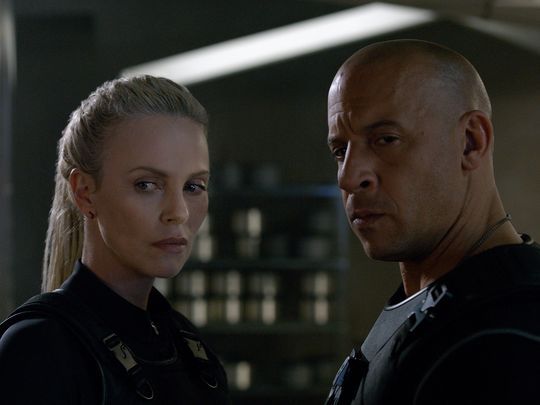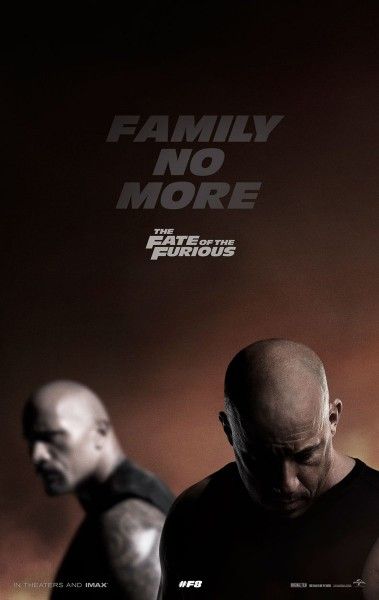If you're looking for action spectacle, the Fast and Furious franchise always has you covered. For sixteen years, the box office juggernaut has consistently raised the stakes of lunatic cinematic set-pieces, brushing off the laws of physics with swagger. To date, five directors have helped shape the mad world of street racing, heists, and terrorist takedowns, and Straight Outta Compton helmer F. Gary Gray is the latest to join the ranks with The Fate of the Furious.
A proven industry veteran with a knack for ensemble, Gray got his start in music videos, the first of which was Ice Cube's iconic "It Was a Good Day." Gigs directing for 90s heavy hitters like Outkast, Queen Latifa, TLC, and Usher followed, and at the age of 24, Gray directed his first feature film, the Ice Cube/Chris Tucker two-hander stoner comedy Friday. In short order, that film went on to become a comedy classic and in the years since, he has thrived in the realm of crime thrillers with films like Set It Off, The Negotiator, and Law Abiding Citizen. Gray got his first taste of vehicular action with his delightful 2003 The Italian Job, which introduced him to two of his Furious stars, Jason Statham and Charlize Theron. He had also previously directed his brawny co-leads Vin Diesel (A Man Apart) and Dwayne Johnson (Be Cool), and in 2015 he delivered Straight Outta Compton, a rare midbudget studio movie that became the surprise hit of the year, earning Universal $200 million at the box office. In short, Gray was the perfect candidate to take the helm of the studio's goliath Furious franchise.
As if taking on your first studio tentpole sequel isn't a large enough task, Gray also had a number of ambitious challenges laid at his feet. With the first sequel without Paul Walker, Gray took the helm just as the franchise of family is reinventing itself after losing one of its own. Longtime Furious screenwriter Chris Morgan tackled the challenge by turning the resident paterfamilias Dom Toretto against his own crew, inverting the structure of Furious films as we know them in the process. But it still had to feel like a Fast and Furious film with all the globe-trotting, gravity-defying vehicular spectacle audiences crave. On such sequence took Gray to Havana, Cuba where he and his team filmed the first American movie shot in the long-embargoed nation in 50 years. As you might expect, that was a challenge of its own. One that called for creative workarounds when Gray ran into some surprising restrictions with even more unexpected solutions.
With Fate of the Furious in theaters this weekend, I recently had the opportunity to chat with Gray about what it takes to make a movie Fast and Furious enough to live up to the legacy of a sixteen-year franchise that has become a worldwide phenomenon. We talked about some of the surprising challenges of filming in Cuba and how he worked around them, why he wanted to highlight moments of comedy in the most dramatic Fast and Furious film, and giving the family their sexiest cars yet. Read the full interview below.
This film is a crazy ride and it's the biggest film you've done, by far. How did you have to adapt your filmmaking to that kind of challenge?
GRAY: It's important to just really define your mission and define the goals up front. We talked about a few things that were really, really important to us. One was respecting Paul's legacy and see how this movie fit in the franchise, and answer the question why. Why make an 8th? Can you make it satisfying? Can you make it worth it for the fans? Can we do something that respects Paul's legacy? When you answer those questions then you go to, "Okay, the premise." Dom goes rogue. Family falls apart. How do we feel about that? For me, I love the premise. I thought that that was a great turn for the franchise and it was something that people are going to resist initially, because it's always about la familia. I think there'll be resistance, but the great thing about storytelling for me, and kind of by definition, at the core of the best stories is good conflict. There's no more conflict than the premise of Dom going rogue, so I love that.
Then you take the audience by the hand and take them to Havana, Cuba, Reykjavik, Iceland, Manhattan, New York with these super cars, and vintage cars, and then ultimately deliver one of the best casts in action film history. Where the biggest action heroes and Oscar winners and you stir it all up and you have the elements to make a great movie. That was my approach and that's how I look at it when I joined the fast family.
I'm curious, was it more challenging to film action in the streets of Manhattan or Cuba?
GRAY: It was a combination, you know. I'll give you an example. It's harder to get ... Well, probably in Cuba, now that I think about it. We have our producers negotiating on their level and that's always a challenge, but then when you introduce the US government and the Cuba government and to have them involved with the negotiating, given our history in the embargo, some of the simplest things that we take for granted shooting here in the states, or even in Europe, had to be negotiated. I'll give an example. We couldn't bring a drone into Cuba because that's considered a spying tool.
Oh, wow.
GRAY: I was able to bring a helicopter, so I brought the first American airship into Havana. That took a lot to negotiate, but it's probably easier to keep an eye on a helicopter than a drone, so that was allowed. It was very hard to send emails. We had very, very limited access to the internet, so some of the simplest tasks it required a herculean effort to achieve. It's so interesting. Only we, meaning our cast and crew, will know what it took to do just the simplest things. It required an army of scientists to negotiate and to execute some of the simplest things in this movie.
It's one of my favorite sequences in the movie, so I'm glad you guys put in the effort.
GRAY: Thank you.
You do a fantastic job elevating the comedy in this film. Can you talk about working with that character dynamic and why you wanted to ramp that up?
GRAY: The comedy and the humor is natural. I don't think there will ever be in an F. Gary Gray film without a certain level of levity or of humor. I just can't help it and I think it's real life. Even in the midst of tragedy, I think human beings naturally want relief, and I think that it comes in all forms. Sometimes in the midst of something extremely challenging and something really funny happens, and it just kind of lets the air out. I think that's just how life works. It's the same with my approach to movies. There are dramatic pockets in The Fate of the Furious that the fans probably will be surprised by. They certainly won't be used to that, and that's because of the premise, but to counter that I counter it with levity and with humor. That's something that I think balances out the tone of the movie and keeps it entertaining. I think Dwayne and Jason do a phenomenal job. I think Tyrese does a phenomenal job.
Absolutely.
GRAY: At the end of the day that's really what it's all about. If you can evoke these emotions, but then also leave with a smile and have a few chuckles along the way, as long as they don't feel foolish, I think it's what it's all about. I mean if you even look at Straight Outta Compton, you know very serious subject matter in that movie. We took the time to find the humor even in such dramatic movie.
I think Tyrese is the funniest he's ever been.
GRAY: I agree.
You've always worked really well with ensembles, and that's one of the hallmarks of the furious franchise.
GRAY: Yes.
By now the family is enormous. How did you go about balancing those beats to make sure everyone has a moment to shine?
GRAY: Well, it's a collaborative effort. I worked with my writer Chris Morgan, producers, Neal Moritz, Vin Diesel. Each principle has their take on their character and the different moments, and so this is truly the definition of a collaborative effort. The key is just to be open to it. I was open to hearing everyone out and being clear about what the goal is, but also making sure everyone had a chance to be creative and make creative contributions. That's what this process was, and you're right, it is a challenge when you have so many characters to give everyone their moment, or moments, and to fit it all within the confines of a movie, the total running time of an action film, but I think it all worked out.
Something you bring that's very obvious is a deep love of cars. Can you talk about when you sort of have the world at your fingertips, how did you select the right vehicles for the right action sequences?
GRAY: The key was to, you know, to study the other movies, make sure we didn't replicate or duplicate the previous seven. Wanted to step out and give the audience something fresh and something new. When you watch the movie we have a moment in a place called the Toy Shop, and the Toy Shop is a place where they have cars that they've confiscated from drug dealers on the east coast. You're going to get kind of wild drug dealer cars that are extremely fast, like a 1966 Corvette Stingray, or a comet orange Lamborghini, or a two-toned Bentley GT. That's how you justify introducing extremely exotic, crazy fast cars. That again just served the mission, which is how can we make it different, how can we be thoughtful to give the audience something fresh. Obviously, Dom's always going to rock with low par cars, you know, Chargers, Challengers, you know, American muscle because that's just how he rolls.
Damn right.
GRAY: [Laughs] That's just how he rolls, but mix it up a little bit and introduce a Ripsaw for Tej, and just different little details to not only deliver something fun and different, but also to connect the cars to the characters so that it kind of fits their personalities as well. Roman, he picks the two-toned Bentley and the atomic orange Lamborghini because he's a little flashy. Well, I would say a lot flashy, so you start to have fun with the car-character combinations. That was a conscious choice, and I hope people enjoy it.
Okay, so I've done my research and I know you are shutting down any sequel questions so I'm not even going to take it there. But having now experienced the demands of making a massive tentpole film, did you like this style of filmmaking and is it something you want to do again?
GRAY: First of all, thank you for doing your research. I do, actually. I feel a great sense of accomplishment after such a massive undertaking. I am tired right now because I'm at the end of what was an extremely challenging movie for a million reasons, but I wake up, I look at the poster on my wall, and I'm very proud of it. It's almost like after surviving and winning and great battle. It is gratifying to know that I'm capable, and hopefully, if you're smart, you learn a lot and then you want to take those tools you learned and apply it to whatever is next. I definitely want to take it to the next level, and the size of the film, it's not daunting to me to take on a film this size. No, not anymore.

